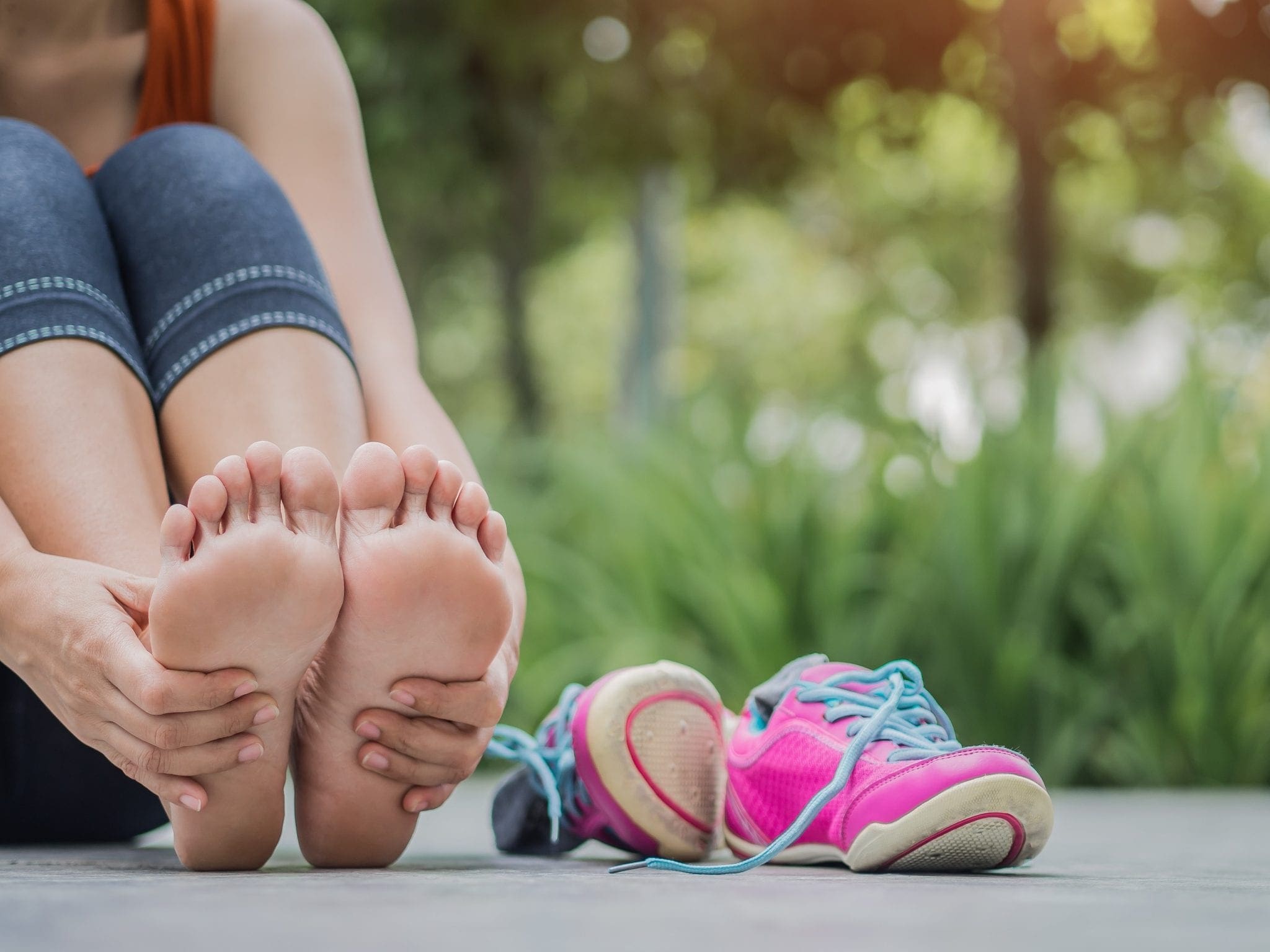
If you are an athlete, you are probably always on your feet, moving around, shifting your weight from one foot to another, while your feet take a beating.
Every athlete knows that their bodies can take a beating while competing or playing sports. There are preventative measures you can take to avoid injury as best as you can, so why should that be any different with your feet?
There are so many reasons why an athlete should visit the foot and ankle doctor, even if the sources of the cause isn’t pain. Besides, wouldn’t you rather see a doctor BEFORE you develop an injury?
1. If there is running in your sport
Being a runner can make you prone to an entire list of possible foot and ankle problems. Not only are you susceptible to aches and pains but also things that can sideline you from running like shin splints. The podiatrist can stop these problems before they start by addressing and flagging them, giving you the knowledge and tools — like a proper athletic shoe or insole that will best avoid and prevent these problems from happening.
2. If you have diabetes
Being an athlete with diabetes poses problems on its own, but having this disease can put you much more at risk to developing foot problems. From dry skin to serious infections, visit a foot and ankle doctor at least once a year to avoid all kinds of complications.
3. If you have some nail issues
Even something as trivial as an ingrown toenail can sideline you for what may seem like forever. So, even if it doesn’t hurt at all and you just are noticing it, see your podiatrist about it first. These pesky ingrown toenails can cause an infection which can lead to much, much worse. If it is also showing symptoms like discoloration or a red color and has a lot of drainage, you might be at risk.
4. If you have corns or calluses.
Looking past the toes, if you have built-up skin that are dangerously getting thicker and thicker, they can actually be a cause of pain later on. This skin is dead, so the procedure and treatment isn’t painful, but if you are building up layers and layers of skin and leaving it untreated, it might become painful.
5. If you also have a bunion
Aside from corns and calluses, bunions are a big bump at the base of your biggest toe. When your bone or your joint is out of place of your big toe, you might see this. Unless you go to your podiatrist, this bunion might not get better on its own.
6. If you have athlete’s foot
Any type of infection is a red flag to go get help, especially on your feet. The majority of athletes will need their feet to be in top condition. If you have athlete’s foot, this will put a hindrance on your athletic activities. So, if you feel like you might have this fungal infection that looks scaly and feels itchy, a visit to the doctor might be beneficial in the near future.
7. If you have any type of discoloration
You might actually see that you have discoloration without having pain or any other symptoms. Unfortunately, skin cancer is the most common cancer when it comes to your feet. So, even if you aren’t having any pain, make sure to check your feet regularly for an unusual mole on the top or bottom of your foot and in between your toes. Also, checking on the surface of your feet isn’t the most important — check under your toenails too. Melanoma can lead to you having dark spots underneath the nails.
8. If you have any numbness
Although numbness might seem like the opposite of pain, it can also be pretty concerning. A numbness factor in your feet and ankle can lead to large-impacting health problems and diseases. We don’t suggest you ever self-diagnosing, so if you are experiencing any numbness or tingling, it is beneficial to have your feel checked. Numbness in your feet may mean diabetes, neurological problems, alcoholism, arthritis or peripheral artery disease.
9. If your feet are cold
Especially if it isn’t normal for you, constantly having cold feet might be an indicator of poor circulation — insufficient blood flow. If you are a smoker, have high blood pressure or heart disease or have had a stroke, you can be more prone to developing cold feet —and not just the stage term. You especially will want to look out for discoloration in the toes when you have cold feet, which might be a sign for something much worse than simply poor circulation.
10. If you have problems with the way you walk
Your gait, or your manner of walking, can change. However, if you have had a sudden change in your gait, especially if you’ve done it without seemingly meaning to, you might be a risk for a neurological problem. It might even be a sign that you have a herniated disk or joint replacements. Whatever the case may be, walking imbalanced can lead to even more health problems in the future, especially if you are an athlete and are constantly on your feet where form is everything.
(* * *)
Regardless if you are competing in highly physical activity or are the average joe, any of these reasons are notable ones to visit the podiatrist. This means that you don’t have to wait to have pain to make a difference. Preventive measures are just as, if not more important than going as more than a precaution. Especially if you are an athlete, any of these reasons can be a possibility of you being sidelined from your sport. Therefore, the more attention and care you give your feet, the more they can work for you and allow you to do what you love the most.

